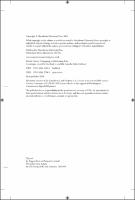Chapter 1 Quarantine and territory in Spain during the second half of the nineteenth century
Abstract
This chapter provides a thorough investigation of the modes by which the sanitary administration coevolved coherently with and inseparably from the Spanish state’s modern transport-communication and economic-industrial infrastructures throughout the nineteenth century. It also investigates examines how quarantine institutions functioned as sanitary gateways or entry checkpoints at borders, physically marking and consolidating while protecting the national territorial space. The paper traces the ideas underpinning the configuration and development of the sanitary network on Spanish national territory, which occurred unevenly – with the most evolved parts depending on certain strategic ports and on links with the railway transport infrastructure that was still under construction. It also suggests that the gradual relaxation of quarantine in liberal Spain was periodically called into question by economic and political policies that defined the relation between the coastal and inland regions of the country.
Keywords
spain; railway network; state's territorial organisation; commercial ports; quarantine; 19th century; spain; railway network; state's territorial organisation; commercial ports; quarantine; 19th century; Alicante; Cholera; Lazaretto; Sanitary districtOCN
1030821762Publisher
Manchester University PressPublisher website
https://manchesteruniversitypress.co.uk/Publication date and place
2018Series
Social Histories of Medicine,Classification
European history
History and Archaeology
c 1500 onwards to present day
Social and cultural history
Society and Social Sciences
History of medicine


 Download
Download Web Shop
Web Shop